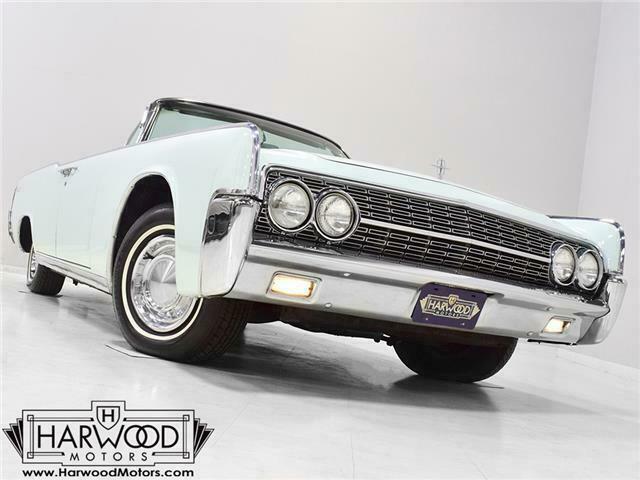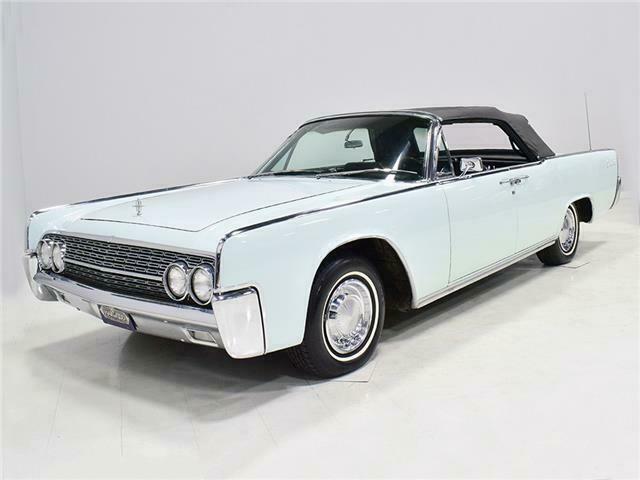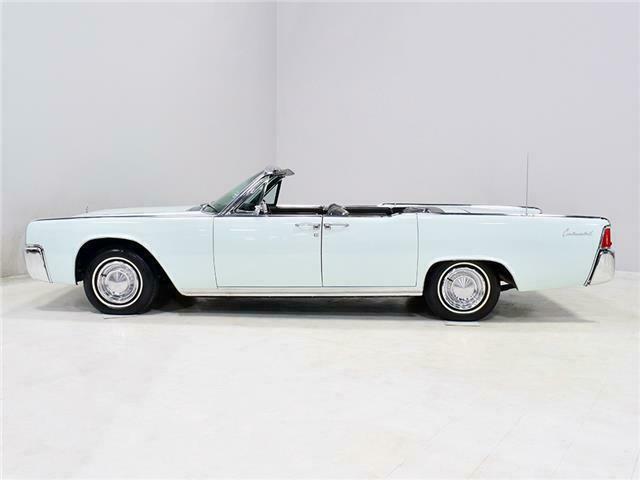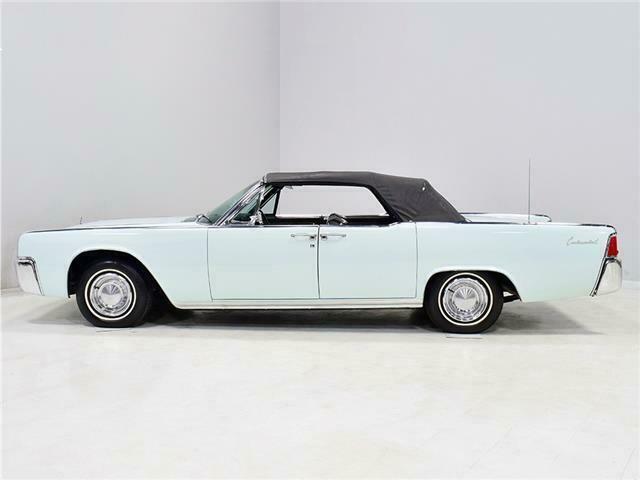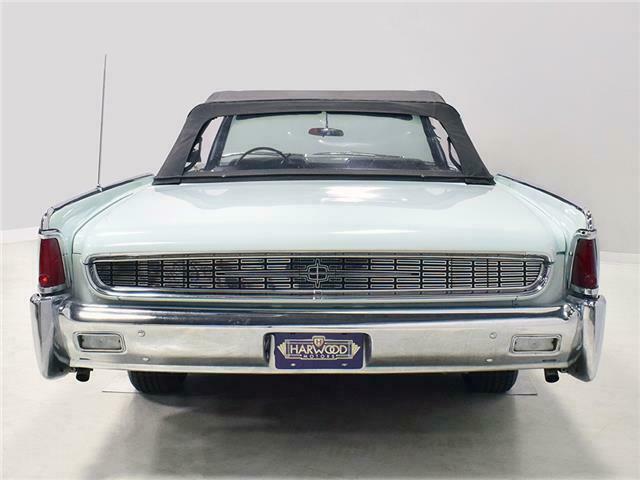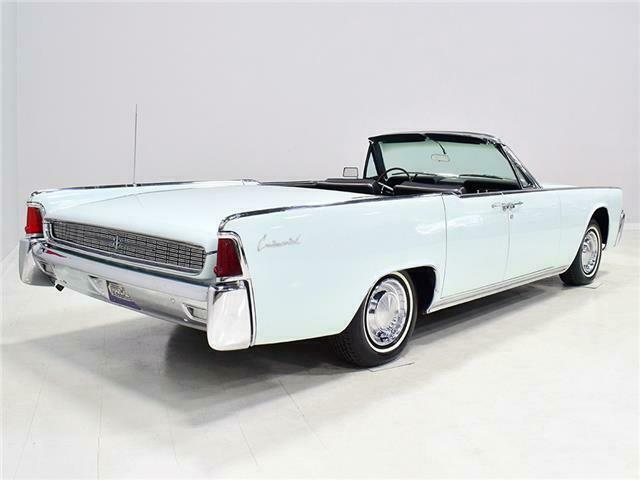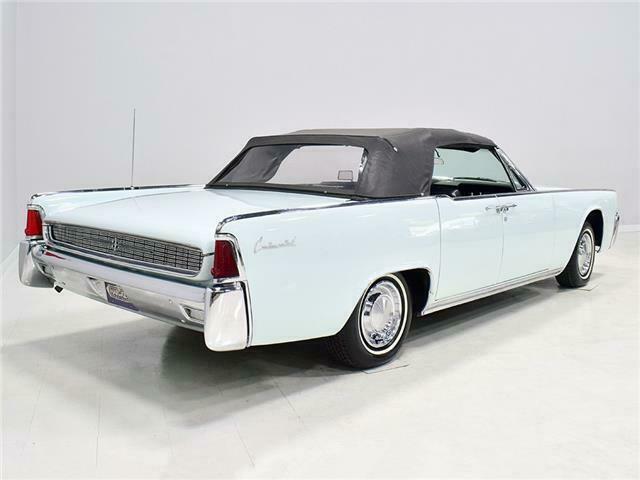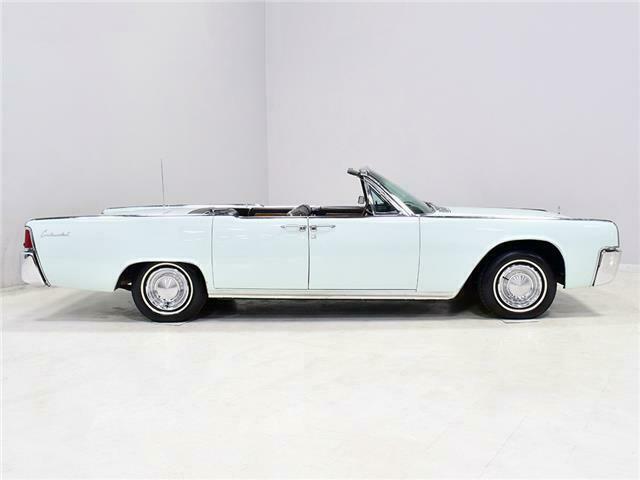Description
At the dawn of the 1960s, Lincoln designers decided that looking back was a mistake. Instead of adding chrome, they started deleting it. Fins were over. And instead of building over-the-top cars that were one-car parades, they decided to build luxury cars for grown-ups. The result was the 1961 Lincoln Continental. It was luxury redefined and you didn’t need to learn anything to know that it was something special the moment you saw it. It needed no recalibration, no cultural awareness, it was instantly recognizable as the top of the mountain. Filled with innovative touches designed by the smartest engineers in the world, it made everything else look obsolete almost overnight. And remarkably, it was smaller than the cars that preceded it, not bigger, signaling a future to come. Today, it remains a cultural icon, a touchstone in our culture that was rediscovered and repurposed for a new generation. In short, the Lincoln Continental is as close as you can get to timeless design. This second-year 1962 Continental convertible best embodies the original design, from the simple grille to the little kick-up behind the rear doors to the ornate insert on the tail. The greenhouse slopes inwards in a way few cars had attempted and the strip of chrome that led from nose to tail was like a frame for the unadorned flanks, perhaps the car’s most striking feature. This one is finished in code N Platinum, which really is light blue, and it emphasizes the cars clean lines quite well. It was extensively refinished about seven years ago, including paint, chrome, and upholstery and still shows extremely well. Starting with an ultra-clean southern car certainly helps, particularly with these Continentals, which are unit-body cars. Given the complexities of the platform, the trademark suicide doors, and convertible top, it always makes sense to buy a good one from the start, and that was the philosophy here. The finish remains in excellent condition, showing some very minor signs of use but nothing noteworthy, and all four doors still swing open and closed like a bank vault. Panel gaps are very good, which is important on a light-colored car, and both the forward-tilting hood and power deck lid snug down flush. Minimalist chrome was a trademark of the fourth-generation Continental, but that doesn’t mean there wasn’t any. In fact, the chrome restoration on this car cost nearly $30,000, and included both bumpers, all the trim along the tops of the fenders and doors, headlight rings, rocker moldings, and the aforementioned panel between the taillights. Other details, like the hood ornament and crisp ‘Continental’ script, remains original, demonstrating what a good, clean original car this was. NOS taillight lenses were sourced and a new windshield was installed. The point was not necessarily a show car, but rather to take a good car up a new notches. The black leather interior was completely restored with new hides on both seats, new carpets throughout, and beautifully restored door panels with genuine wood inserts. There’s more real wood on the dashboard, which uses brushed stainless to great effect, offering gauges that look futuristic without being gimmicky, and the woodgrained wheel does warm up the all-black interior. As a top-of-the-line car, Continentals came loaded with standard features like power windows (the windows drop down a few inches when the doors are opened to make a better seal), power steering, power brakes, and an AM radio. Other features on this car include a power front seat, tilt steering column, and factory A/C, which is operational but not terribly effective—there are only those two vents in the center stack and that’s a lot of space to cool! Even the clock works, ticking away reliably. Only the power locks are inop, but we haven’t investigated the cause (we believe they are vacuum-powered). Those dramatic suicide doors give fantastic access to the spacious back seat and nothing attracts a crowd like opening all four doors for a clear view of the interior. The convertible top mechanism is descended from the Ford Skyliner retractable hardtops of the late ‘50s, so its operation should look familiar: hit the button and the latches automatically release themselves from the windshield header. The trunk lid powers itself open and the top folds away into the massive trunk compartment. A small trim panel folds up into place and the whole assembly lowers itself flush so there’s no top stack, no boot, nothing to interrupt the smooth, clean Continental’s lines. With the top up, the trunk offers enough space for a month-long road trip, as well as a full-sized spare tire and jack assembly hidden in the driver’s quarter panel. The Continental wasn’t smaller under the hood, packing Ford’s 430 cubic inch V8 rated at 300 horsepower and a towering 465 pounds of torque. It wasn’t about speed, but rather effortlessness, and even with 5200 pounds to pull around, performance is brisk. Shockingly, there’s only a 2-barrel carburetor under the massive air cleaner, but that is how it was built and how all 1962 Continentals were delivered. The engine starts easily and idles well once it’s off the choke, and it has been neatly finished in traditional Ford Blue with black accessories. The big A/C compressor dominates the engine bay, along with Ford’s familiar high-mounted radiator expansion tank. These have proven to be extremely reliable machines and service is still easy with great parts availability, so feel free to get in and enjoy the car. On the road, it pulls the big ragtop up to speed without any drama, and seems to enjoy being driven hard instead of gently—either way, it’s responsive and torquey. We note a slight exhaust leak, which is probably a manifold gasket, but it is only audible under hard acceleration. Otherwise, it drives quite well, as you’d expect from a top-of-the-line Lincoln. A 3-speed automatic transmission was the only choice, and it, too, is a reliable traveling partner. There’s so much torque on tap that downshifts are seldom needed, but planting your right foot will call up a quick drop to 2nd and maybe even a chirp of the tires—unseemly but indicative of the power on tap. The unit-body construction is quite evident in the nearly flat floors, and the car relies on heavy box-section rocker panels for its structure, so it’s a relief to see that these are in excellent condition with no signs of previous rust damage or accident repair. The floors are solid, protected by a light dusting of undercoating and there’s a new dual exhaust system that’s suitably hushed under all circumstances. 2.89 gears in the monstrous rear end mean this is a superlative highway cruiser and thanks to recent shocks, the ride is luxury car plush. Remarkably, this massive car sits on factory 14-inch steel wheels with simple hubcaps, and they carry 225/75/14 whitewall radials with lots of life left in them. These Continentals are still an all-or-nothing proposition; project cars are worth very little but exceptional cars can approach six figures. Given the cost of restoring one of these cars, it always makes sense to buy the very best one you can afford. This lovely 1962 Continental convertible offers a lot of high-quality restoration work, a fantastic original color combination, and, perhaps most importantly, a fully operational convertible top. Early Continentals seem to enjoy a preference among collectors for their cleaner, purer design, and it’s hard to argue against it when the results look this good. Call today! Harwood Motors welcomes and encourages personal and professional inspections of all vehicles prior to purchase.
